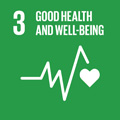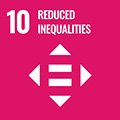- Docente: Nicola Barban
- Credits: 10
- SSD: SECS-S/04
- Language: English
- Teaching Mode: In-person learning (entirely or partially)
- Campus: Bologna
- Corso: Second cycle degree programme (LM) in Statistical Sciences (cod. 9222)
Learning outcomes
By the end of the course, the student will gain an understanding of the most interesting and innovative research issues in the interdisciplinary field of genetics, population studies and related social sciences. In particular, the student will be able to interpret and apply key concepts of population genetics to understand how genes influence biosocial outcomes. The student will also be able to use molecular genetic data and apply modern statistical genetic techniques to understand how social environments moderate, amplify, or attenuate genetic influences on both medical and social outcomes.
Course contents
-
Fundamental Concepts and the Human Genome
-
Population structure and stratification
-
Heritability
-
Genome-Wide Association Studies
-
Polygenic Scores and Genetic Architecture
-
Mendelian Randomization and instrumental variables
-
Gene-Environment Interplay
-
Working with Genetic Data
-
Ethical Issues in Genomics Research
-
Case studies of social sciences and genetic research
Readings/Bibliography
- M.C. Mills, N. Barban and F.C. Tropf (2020) An Introduction to Statistical Genetic Data Analysis. MIT Press
- Selected readings (journal articles) will be distributed during the course
Other optional books:
- D. Conley and J. Fletcher (2018) The Genome Factor. Princeton University Press
- K. P. Harden (2021) Genetic Lottery. Princeton University Press
Teaching methods
- Frontal lectures
- For the practical sessions, students will be invited to bring their own laptops. Please discuss with the instructor if you need support.
Assessment methods
For students attending class regularly, the final evaluation will be composed by two parts:
- Group or individual project/assignement (max 3 people). Instructions on the project will be distributed in class. (60% of the final grade)
- Oral examination (40% of the final grade)
Students not attending class are invited to contact the instructor to discuss the examination.
Teaching tools
Software used:
- RStudio and R
- PLINK
- GCTA
- PRSice
- LDpred
- LDSC
- MTAG
Office hours
See the website of Nicola Barban
SDGs


This teaching activity contributes to the achievement of the Sustainable Development Goals of the UN 2030 Agenda.
